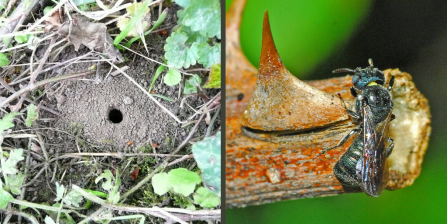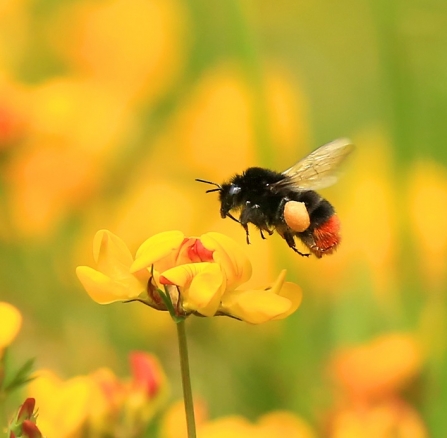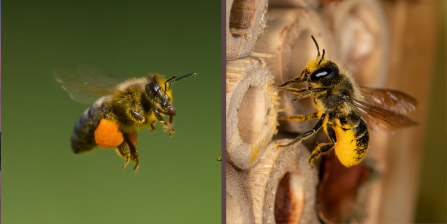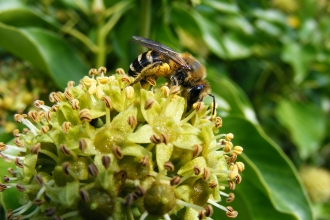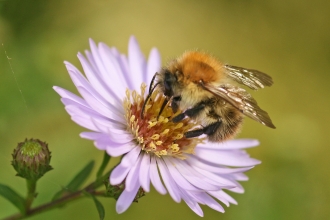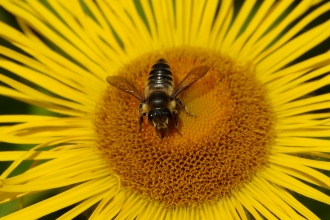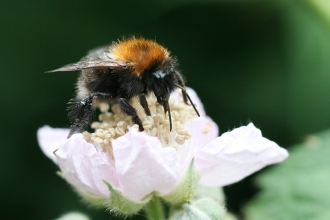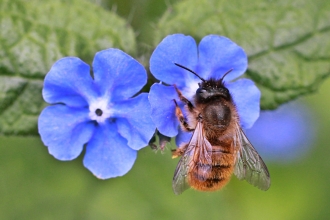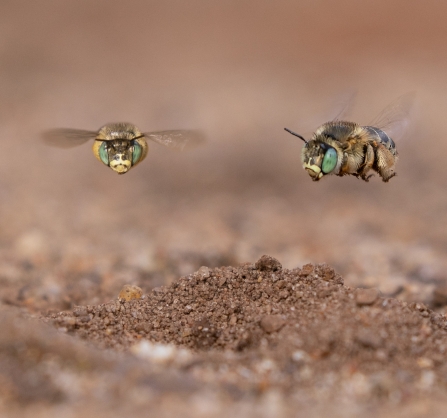
Hairy-footed flower bees sometimes nest in compacted soil. Photo by Jon Hawkins
1. Over 270 species of bee have been recorded in Great Britain living in a surprising variety of habitats including marshes, sand dunes, heathlands, wetlands, chalk grasslands, quarries, sea walls and even post-industrial land. Of these 270 species, only one is a honey bee – there are 25 species of bumblebees and all the others are solitary bees.


